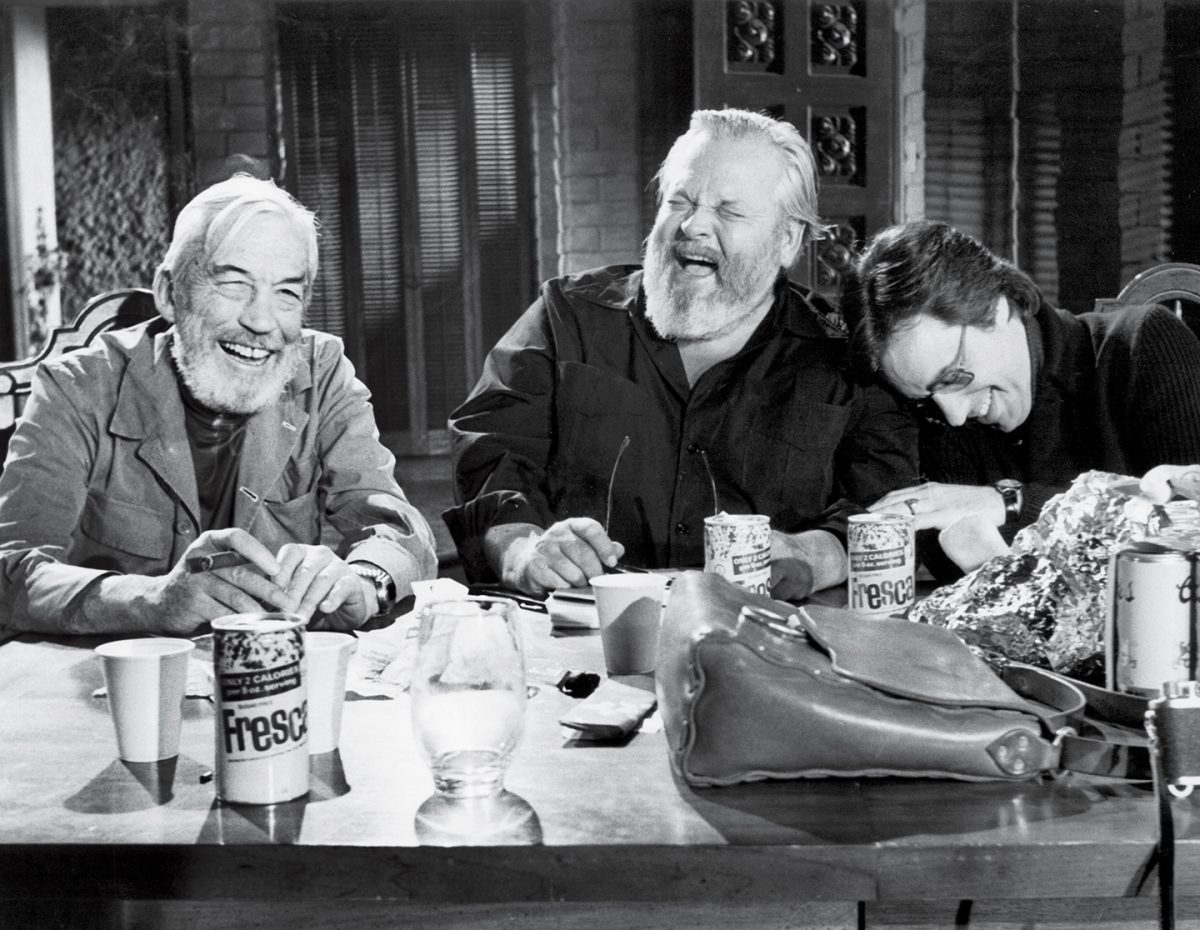“The Other Side of the Wind” has been a long time coming, released over 30 years after director Orson Welles’ death in 1985. Therefore, it is only appropriate that this review should come several months after the film’s 2018 release. Regardless of the time that has passed since the release, Welles is an ever-relevant, tragic titan of cinema.
While “The Other Side of the Wind” is a bit of a mess, it is a glorious mess, and it has a storied, complex history.
Thankfully, Netflix has released a documentary, called “They’ll Love Me When I’m Dead,” which sheds considerable light on the making of “The Other Side of the Wind,” and those seeking to seriously understand the film would do well to watch the documentary first.
“The Other Side of the Wind” is about the final day of life for a Hollywood director, Jake Hannaford (John Huston), as he clings to relevancy. He holds a spectacle of a birthday party at which he intends to screen his final film, also called “The Other Side of the Wind.” Everyone from executives to cinéastes attend and document the occasion, and their documentation is included in the film, giving it a found-footage flourish.
The film-within-a-film is a concoction both ridiculous and beautiful; it depicts a man (Robert Random) relentlessly pursuing a woman (a self-possessed Oja Kodar, who also co-wrote the film), and it is meant to be an old man’s shallow interpretation of a steamy art film. Meanwhile, back in the real world, Hannaford and the crowd around him unpack a lifetime of obsessions regarding his career and turbulent personal life.
The magical thing about “The Other Side of the Wind” is that it makes a myth of its own making. It is so self-referential that, with the proper context, it is easy to forget you are watching a film; Hannaford seems to be a stand-in for Welles himself, and the resulting parallels are both hilarious and painful.
There are those who love Welles deeply and are also well acquainted with the saga of uncompleted projects – films seemingly stolen out of his hands by Hollywood and various towering institutions. For that demographic, the film is one that must be seen.
It lends a certain completeness and complexity to Welles’ body of work. It helps us better understand Welles’ sense of himself in the context of the ‘70s, when much of the footage was shot. For an even better understanding of Welles and “The Other Side of the Wind,” watch “F for Fake,” the semi-documentary Welles made while he was trying to shoot “The Other Side of the Wind.” It is the key to understanding much of the substance and style of the latter.
For the casual Netflix viewer passively scrolling through the slew of Netflix originals, “The Other Side of the Wind” may not be the best choice; it is quite confounding even for those familiar with Orson Welles’ body of work.
But perhaps it is not such a terrible thing to be perplexed by something, to simply succumb to the visceral experience it provides. After all, “The Other Side of the Wind” is a kaleidoscopic work of art, as inventive and visually arresting as “Citizen Kane.”







